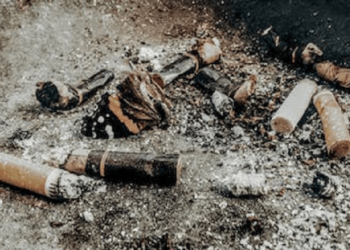The World Meteorological Organization will be there, too. Ozone layer protection is critical, and science-based solutions are the best way to solve the world’s most critical problems.UV radiation can harm living things, but the ozone layer in the upper atmosphere protects them from it. People who use refrigerators and aerosol spray are to blame for the ozone “hole” found in 1985. CFCs, which are ozone-depleting chemicals and greenhouse gases, are to blame. In 1987, more than 200 countries signed the Montreal Protocol, which banned the production and use of CFCs.A treaty called the Montreal Protocol protects plants and their ability to remove carbon dioxide from the air. It also protects the ozone layer from harmful UV radiation, damaging it.
The original goal of the Montreal Protocol was to protect the ozone layer and help it heal. Over the last 30 years, it has done an excellent job. There has been a lot of damage to the ozone layer for a long time. In a statement, UN Secretary-General Antonio Guterres said that “the cooperation we have seen under the Montreal Protocol is precisely what is needed now to take on climate change, which is a threat to our communities.
Before the middle of the century, the Arctic and Northern Hemisphere mid-latitudes should start to recover the ozone layer, followed by the Southern Hemisphere mid-latitudes around mid-century, and the Antarctic region by 2060, according to a Scientific Assessment of Ozone Depletion from the WMO and the UN Environment in 2018.
Halons and chlorofluorocarbons will stay in the air for a long time, even though they have been banned. Even if there were no more chlorine and bromine in the air, new emissions would not be enough to destroy ozone over Antarctica from August to December, even if there were no more emissions. There’s a good chance that the ozone hole will show up again this spring, as it has for the last few years. Most of what affects its size and depth come from how the weather changes over the year.
This year’s ozone hole has grown to 23 million square kilometers by September 13, which is more than the average since the mid-1980s, NASA says. This is a lot bigger than the average since then. A lot of ozone was in the air this season. The lowest level was 140 DU. It changes in size each year in the southern hemisphere, but it gets more extensive from late September to early October.
People who work for the World Meteorological Organization’s Global Atmosphere Watch Program use satellites and ground-based monitoring stations to watch its progress. These observations are being used by NASA, the Copernicus Atmospheric Monitoring Service, the European Center for Medium-Range Weather Forecasts, KNMI, and many other groups to provide near-real-time information on ozone levels in different stratospheric regions, the location and size of an ozone depletion area, and other things.
When the weather was different in 2020, there were substantial ozone holes over Antarctica and the Arctic because of how the air was moving. Since its discovery, the smallest Antarctic ozone hole was formed in 2019 because of changes in the stratosphere. This shows how important it is to keep an eye on things and keep an eye on things.
The original goal of the Montreal Protocol was to protect the ozone layer and help it heal. Over the last 30 years, it has done an excellent job. There has been a lot of damage to the ozone layer for a long time. In a statement, UN Secretary-General Antonio Guterres said that “the cooperation we have seen under the Montreal Protocol is precisely what is needed now to take on climate change, which is a threat to our communities.
Before the middle of the century, the Arctic and Northern Hemisphere mid-latitudes should start to recover the ozone layer, followed by the Southern Hemisphere mid-latitudes around mid-century, and the Antarctic region by 2060, according to a Scientific Assessment of Ozone Depletion from the WMO and the UN Environment in 2018.











